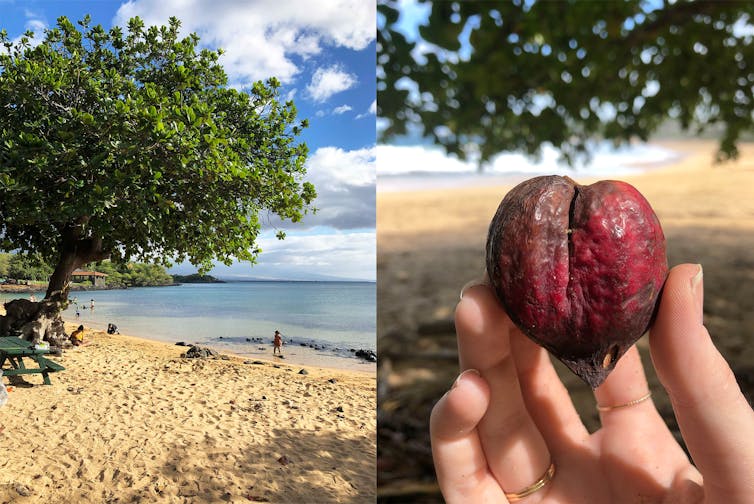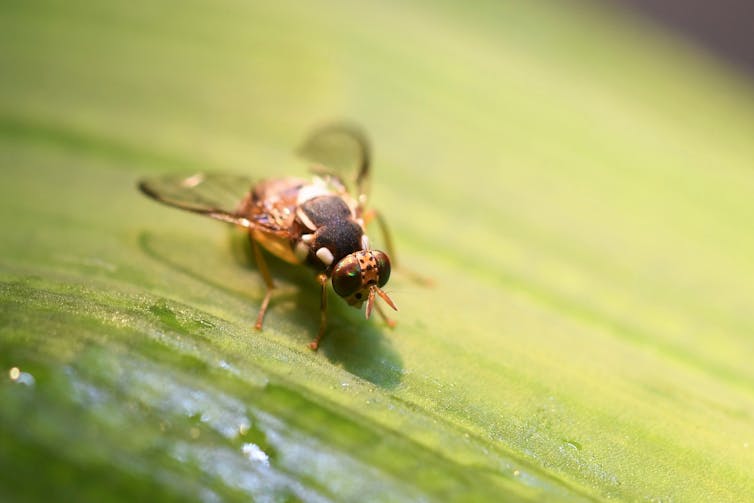Take a stroll along one of the beaches on Hawaii Island in late summer, and you’ll likely stumble upon almond-shaped fruits lying in the sand. Known as false kamani nuts, or tropical almonds, they fall from tall, shady Terminalia catappa trees that line the many picturesque ocean views on the island.
But what may not be clear to the casual beachgoer is that there’s a fight for survival occurring within the flesh of these unassuming fruits. Tropical almonds are one of many active battlegrounds in a war between a global agricultural pest, a parasitic wasp and a beneficial virus.
As an entomologist who studies insect viruses, I want to untangle the complex interactions that insects have evolved with microbes. The findings might help researchers tackle global food security issues.

Terminalia catappa trees are common on Hawaiian beaches. Their tropical almond fruits are often infested with immature tephritid fruit flies.
Kelsey Coffman, University of Tennessee
A global pest challenge
At the center of this conflict are invasive fruit flies in the family Tephritidae, many of which have spread across the globe and wreak havoc on hundreds of commercial fruits and vegetables.
In Hawaii, several species of tephritid fruit fly invaded, starting in the late 1800s. They have caused major economic losses to fruit production across the islands. Scientists and fruit growers have undertaken enormous efforts to control these flies since their initial introductions, but they remain a serious economic problem.
One reliable method of control has been to release tiny insects called parasitoid wasps into the wild that can hunt down immature fruit flies and target them for annihilation. The term parasitoid describes an organism that spends its development as a parasite and eventually kills its host.
Parasitoid wasps use an elongated stinger, known as an ovipositor, to drill into fruits where flies are developing and pierce the fly’s body to lay an egg within. Wasp eggs hatch inside the fly host and gradually devour the entire fly from the inside out.
Human use of parasitoid wasps or other natural enemies to control pest populations is known as biological control, or biocontrol. It was so successful in Hawaii that several species of parasitoid wasp have established wild populations on the islands. They have helped continuously suppress multiple fruit fly pests to this day.
The release of nonnative insects for biocontrol could have unforeseen negative consequences for local ecosystems. Therefore, federal agencies like the U.S. Department of Agriculture have strict regulations for new and existing biocontrol programs.

The oriental fruit fly, Bactrocera dorsalis, is one of the world’s most infamous fruit fly pests because of its ability to infest hundreds of different fruit crops.
Sheina Sim
The enemy of my enemy is my friend
So, how do wasps achieve the impressive feat…



